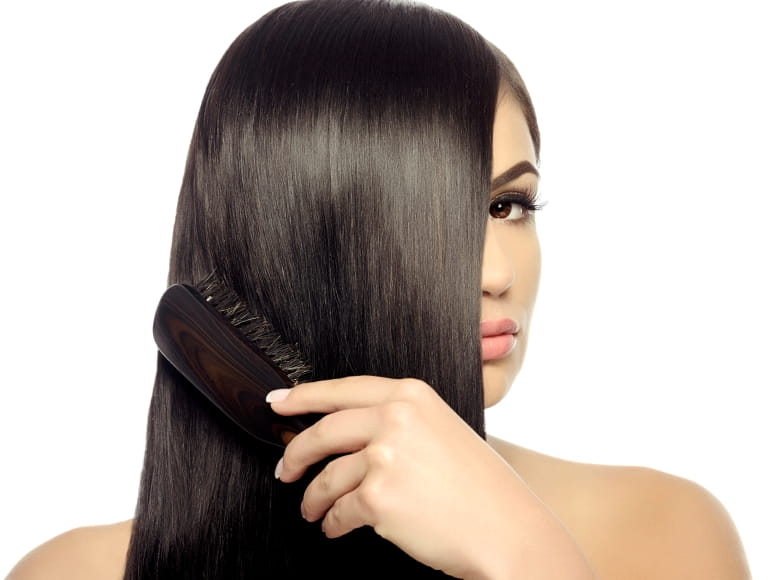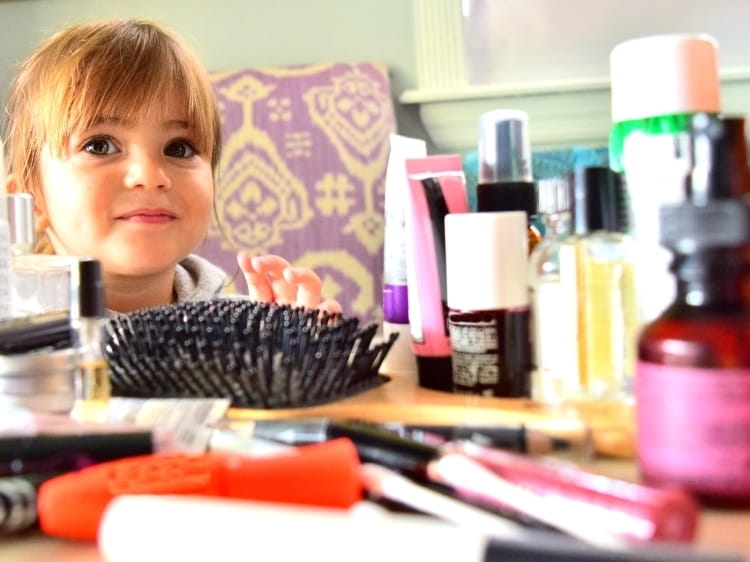Can Hair Relaxers Cause Cancer?

The Bottom Line
A hair relaxer is a cream or thick paste that chemically changes the texture of curly hair to make it straighter. If it is swallowed or comes into contact with the skin or eyes, hair relaxers can cause burns.

How do hair relaxers work?
Human hair is made of long chains of the protein known as keratin, which is held together by sulfur bonds. More sulfur bonds result in greater curliness in the hair. Hair relaxer products disrupt the sulfur bonds and reduce the curliness of the hair. While anyone looking to decrease the curliness of their hair might use a hair relaxer, the marketing of these products is heavily directed at Black people globally.Are hair relaxers caustic?
Hair relaxers are one- or two-step systems involving a cream relaxer with calcium, lithium, or sodium hydroxide and an activator. Both components are very caustic. A second type of hair relaxer is referred to as a "thio" relaxer and is made with ammonium thioglycolate. Thio relaxers are usually less caustic and are used primarily in permanent waving. You will also notice "lye" or "no lye" relaxers. "No lye" relaxers do not have the active ingredient sodium hydroxide and instead have other hydroxides, like calcium hydroxide. "No lye" relaxers are marketed as being milder, although there is still a considerable risk of caustic injury.Are hair relaxers toxic if ingested?
Swallowing a hair relaxer can cause burns to the lips, mouth, throat, and stomach. People will quickly vomit and have swelling, redness, and even blistering of their lips and mouth. If there is a burn to the throat, the person cannot swallow and will often drool excessively and refuse to eat or drink. Anyone with these symptoms should be evaluated in an emergency room immediately. There can be burns even past the throat into the lining of the esophagus and stomach. Do not make the person throw up. Vomiting can make the problem worse.Can hair relaxers harm your skin?
Hair relaxers can cause moderate to severe burns of the skin and scalp. A first-degree burn looks and feels like a sunburn. It only affects the uppermost layer of the skin. There is burning and pain, and the skin becomes reddened.
Second- and third-degree burns affect the deeper layers of the skin. The skin will break down, blisters can form, and bleeding can occur. These burns can become very painful and possibly infected. Depending on the extent of the burn, a doctor may have to provide specific burn therapy.
Can hair relaxers harm your eyes?
Hair relaxers can cause burns to any part of the eye they contact. This often occurs when treated hair strands fall over and into the eye. Chemical burns to the eye are considered a medical emergency and need immediate evaluation in an emergency room. If left untreated, an injury to the eye can be permanent and vision loss can occur.
Do hair relaxers cause cancer?
There is growing evidence of a connection between hair relaxer use and cancer. The strongest association is with uterine cancer. How often a hair straightener is used and how many years it has been used seem to be contributing factors. The association with cancer is one of the major reasons why safer alternative products are being developed.
My child got into a hair relaxer. What should I do?
The extent of a caustic injury or burn from hair relaxers is directly related to the duration of exposure. This means that the sooner the substance is removed from the skin, eyes, or mouth, the better the outcome. The key is to immediately rinse the mouth, skin, or eyes with lots of water. Do not make the child throw up. After rinsing the affected area, call Poison Control right away for further treatment advice.
If you suspect someone has been exposed to hair relaxer, call Poison Control at 1-800-222-1222 right away.
Serkalem Mekonnen, RN, BSN, MPH
Certified Specialist in Poison Information
Revised William G. Troutman, PharmD
Professor of Pharmacy Emeritus
Poison Control Media Information
Did you find this page helpful? If so, we need your support. Poison Control is in constant competition with misinformation online. Links to www.poison.org or our webPOISONCONTROL triage tool from other websites and blogs help internet searchers quickly find accurate information and Poison Control’s contact information in an emergency. If you use the content from this page, please provide attribution via a link back to this page, www.poison.org, or https://triage.webpoisoncontrol.org/#!/exclusions. By doing so, you could save a life. Thank you!
Poisoned?
CALL 1-800-222-1222
Prevention Tips
- Read and follow the directions for home hair relaxer kits carefully before each use.
- Discard unused hair relaxers safely.
- Never store hair relaxer in an unmarked container for later use.
- Keep hair relaxers out of reach of children or pets.
- Avoid any direct contact with the product, being sure to keep it away from the mouth, eyes, and skin.
- Rinse off the product as soon as possible.
This Really Happened
An emergency room nurse called Poison Control about a young boy who was brought in by his mother after swallowing hair relaxer 4 hours earlier. The boy was screaming and crying. He was also drooling and refusing to eat or drink. His mother reported a blister in his throat.
The boy was admitted to the hospital for observation. Because he continued to refuse food and fluids, a doctor performed an endoscopy using a small tube with a camera at the end to inspect the boy’s throat, esophagus, and stomach, looking for burns or other injuries. Fortunately, the endoscopy showed that there was no damage to the esophagus or stomach. By the following day, the boy was well enough to be discharged from the hospital.
For More Information
References
Poisoned?
CALL 1-800-222-1222
Prevention Tips
- Read and follow the directions for home hair relaxer kits carefully before each use.
- Discard unused hair relaxers safely.
- Never store hair relaxer in an unmarked container for later use.
- Keep hair relaxers out of reach of children or pets.
- Avoid any direct contact with the product, being sure to keep it away from the mouth, eyes, and skin.
- Rinse off the product as soon as possible.
This Really Happened
An emergency room nurse called Poison Control about a young boy who was brought in by his mother after swallowing hair relaxer 4 hours earlier. The boy was screaming and crying. He was also drooling and refusing to eat or drink. His mother reported a blister in his throat.
The boy was admitted to the hospital for observation. Because he continued to refuse food and fluids, a doctor performed an endoscopy using a small tube with a camera at the end to inspect the boy’s throat, esophagus, and stomach, looking for burns or other injuries. Fortunately, the endoscopy showed that there was no damage to the esophagus or stomach. By the following day, the boy was well enough to be discharged from the hospital.
